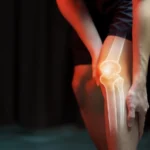
Aerobic sports like running, basketball, football, tennis, and CrossFit are great for cardiovascular health, strength development, and mental health. But these sports put serious stress on your joints—particularly your knees, hips, shoulders, and ankles. If not cared for properly, this can cause pain, swelling, or even severe joint damage like ligament tears, dislocations, and cartilage injury.
Whether you’re a competitive athlete or a weekend warrior, safeguarding your joints is crucial to performance, longevity, and quality of life. Here’s how you can do it successfully.
1. Warm Up and Cool Down Correctly
One of the quickest ways to bring on joint injuries is to skip your warm-up. A proper warm-up gets blood flow into the muscles and joints, relaxes ligaments, and conditions the body for explosive movement.
Warm-up tips:
5–10 minutes of gentle cardio (jogging, skipping, dynamic stretching)
Sport-specific movements such as side lunges, arm circles, or high knees
Cooling down also has the effect of flushing out lactic acid and returning your heart rate to normal, which assists joint recovery.
2. Strengthen Supporting Muscles
Strong muscles absorb shock and minimize the direct load on joints. Prioritize developing core strength, glute muscles, quads, hamstrings, and shoulder stabilizers to assist joint mechanics.
Add strength training at least 2–3 times a week with the following exercises:
Squats, lunges, and step-ups for hips and knees
Planks and dead bugs for core stability
Rows, band pulls, and push-ups for shoulder stability
3. Wear the Right Gear
Sports-specific footwear and braces can do wonders in terms of how your joints are being protected.
Tips:
Replace worn-out shoes every 300–500 miles of running or regular use
Use knee, ankle, or elbow supports when you are recovering from injury
Use orthotic inserts if you have flat feet or abnormal gait
The appropriate gear dissipates shock, maintains alignment, and averts overuse trauma.
4. Don’t Ignore Flexibility and Mobility
Restricted range of motion in the shoulders, hips, or ankles can cause joints to move improperly, elevating the risk of injury.
Incorporate mobility work into your weekly schedule:
Foam rolling before and after exercise
Yoga or dynamic mobility exercises (hip openers, thoracic rotations)
Stretching the shortened muscle groups, particularly hamstrings and calf muscles
5. Know When to Rest
Joint pain that continues or increases with activity is your body’s signal to rest. Overtraining is the leading cause of tendonitis, bursitis, and stress fractures.
Rest wisly:
Plan rest days every week
Apply ice or anti-inflammatory treatment after hard training
Sleep a minimum of 7–8 hours per night for tissue repair
Remember: progress isn’t made just in training—it’s made in recovery.
6. Master Proper Technique
Poor technique places unnatural stress on joints. Whether weightlifting or jumping, biomechanics are important.
Take advice from a coach or physiotherapist to:
Enhance form
Prevent improper movement patterns
Decrease uneven loading of joints
By way of example, collapsing knees when squatting or improper landing mechanics can disintegrate knee ligaments over time.
7. Don’t Suppress Ongoing Joint Pain
Pain that lasts beyond 48–72 hours or keeps coming back needs to be evaluated. Early intervention can prevent long-term damage.
Common signs that warrant medical attention:
Clicking or locking joints
Swelling or warmth around the joint
Instability or giving way
Decreased range of motion
When to See a Specialist
If you’ve had previous joint injuries or play high-impact sports regularly, it’s wise to consult a sports medicine specialist for a personalized joint health plan.
Dr. Abhijeet Savadekar, one of the top orthopaedic surgeons and sports injury experts in Mumbai, is extremely experienced in treating sports persons and fitness enthusiasts. He uses advanced diagnostic equipment, non-surgical treatments, and minimal access techniques such as arthroscopy to provide world-class joint care. From prevention programs to chronic treatment, Dr. Savadekar keeps you active-stronger and safer.
Conclusion
High-impact sports need not be at the expense of your joint health. With proper training, recovery, technique, and medical care, you can remain injury-free and perform at your best.
For expert guidance in joint care and sports injury management, consult Dr. Abhijeet Savadekar, a leading orthopaedic and sports medicine specialist based in Mumbai. With vast experience in treating professional athletes and active individuals, he provides advanced, personalized care to help you recover faster and protect your joints for the long run.




